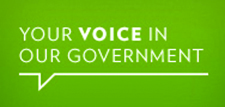| << Chapter < Page | Chapter >> Page > |

In the executive branch, each individual department and agency is technically responsible for its own policy analysis. The assumption is that experts in the Federal Communications Commission or the Federal Elections Commission are best equipped to evaluate the impact of various proposals within their policy domain. Law requires that most regulatory changes made by the federal government also include the opportunity for public input so the government can both gauge public opinion and seek outside perspectives.
Executive branch agencies are usually also charged with considering the economic impact of regulatory action, although some agencies have been better at this than others. Critics have frequently singled out the EPA and OSHA for failing to adequately consider the impact of new rules on business. Within the White House itself, the Office of Management and Budget (OMB) was created to “serve the President of the United States in implementing his [or her] vision” of policy. Policy analysis is important to the OMB’s function, but as you can imagine, it frequently compromises its objectivity during policy formulation.
What is your passion? Is there an aspect of society you think should be changed? Become a public policy advocate for it! One way to begin is by petitioning the Office of the President. In years past, citizens wrote letters to express grievances or policy preferences. Today, you can visit We the People, the White House online petitions platform ( [link] ). At this government site, you can search for petitions related to your cause or post your own. If your petition gets enough signatures, the White House will issue a response. The petitions range from serious to silly, but the process is an important way to speak out about the policies that are important to you.

Follow-up activity: Choose an issue you are passionate about. Visit We the People to see if there is already a petition there concerning your chosen issue. If so, join the community promoting your cause. If not, create your own petition and try to gather enough signatures to receive an official response.
The policy process contains four sequential stages: (1) agenda setting, (2) policy enactment, (3) policy implementation, and (4) evaluation. Given the sheer number of issues already processed by the government, called the continuing agenda, and the large number of new proposals being pushed at any one time, it is typically quite difficult to move a new policy all the way through the process.

Notification Switch
Would you like to follow the 'American government' conversation and receive update notifications?